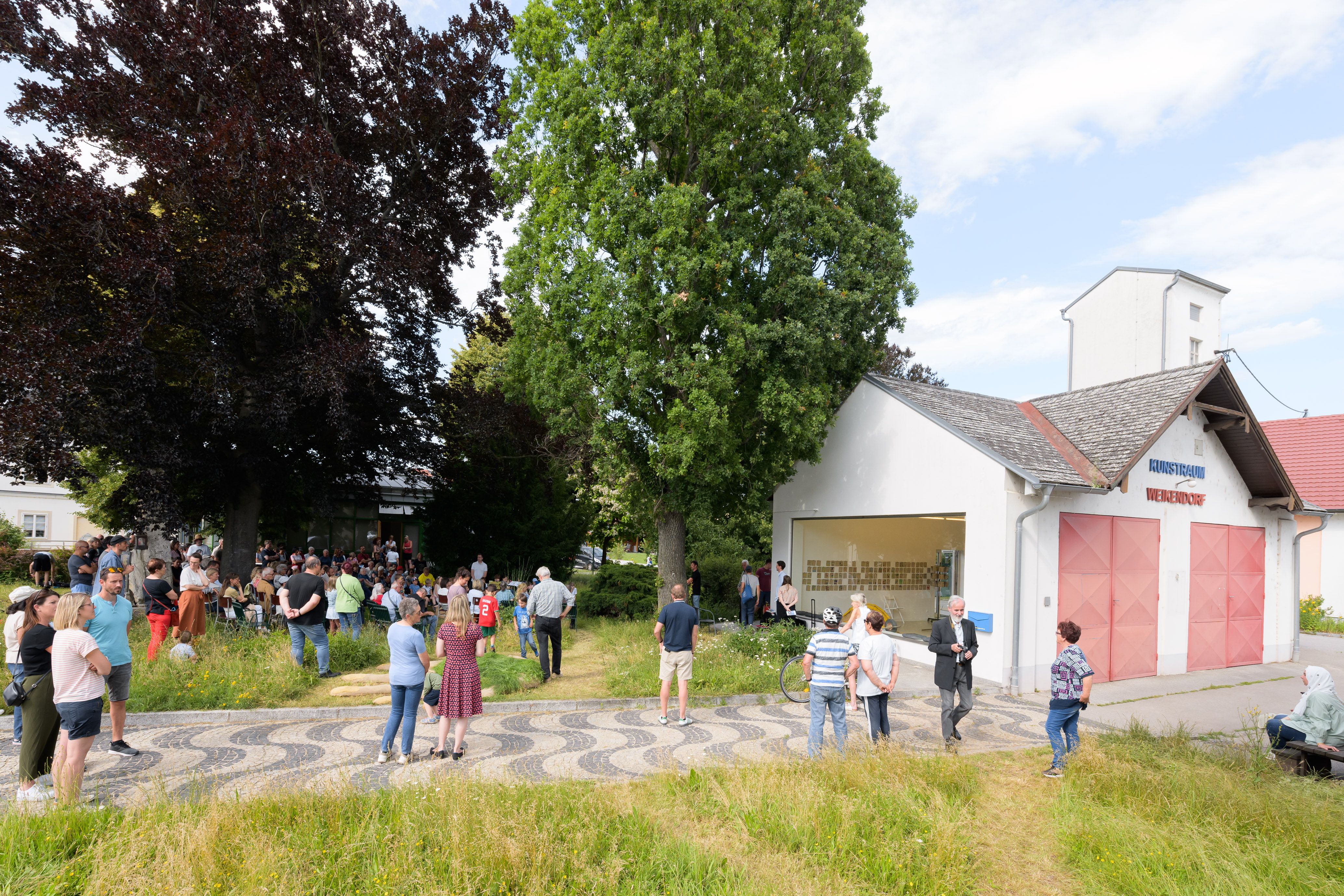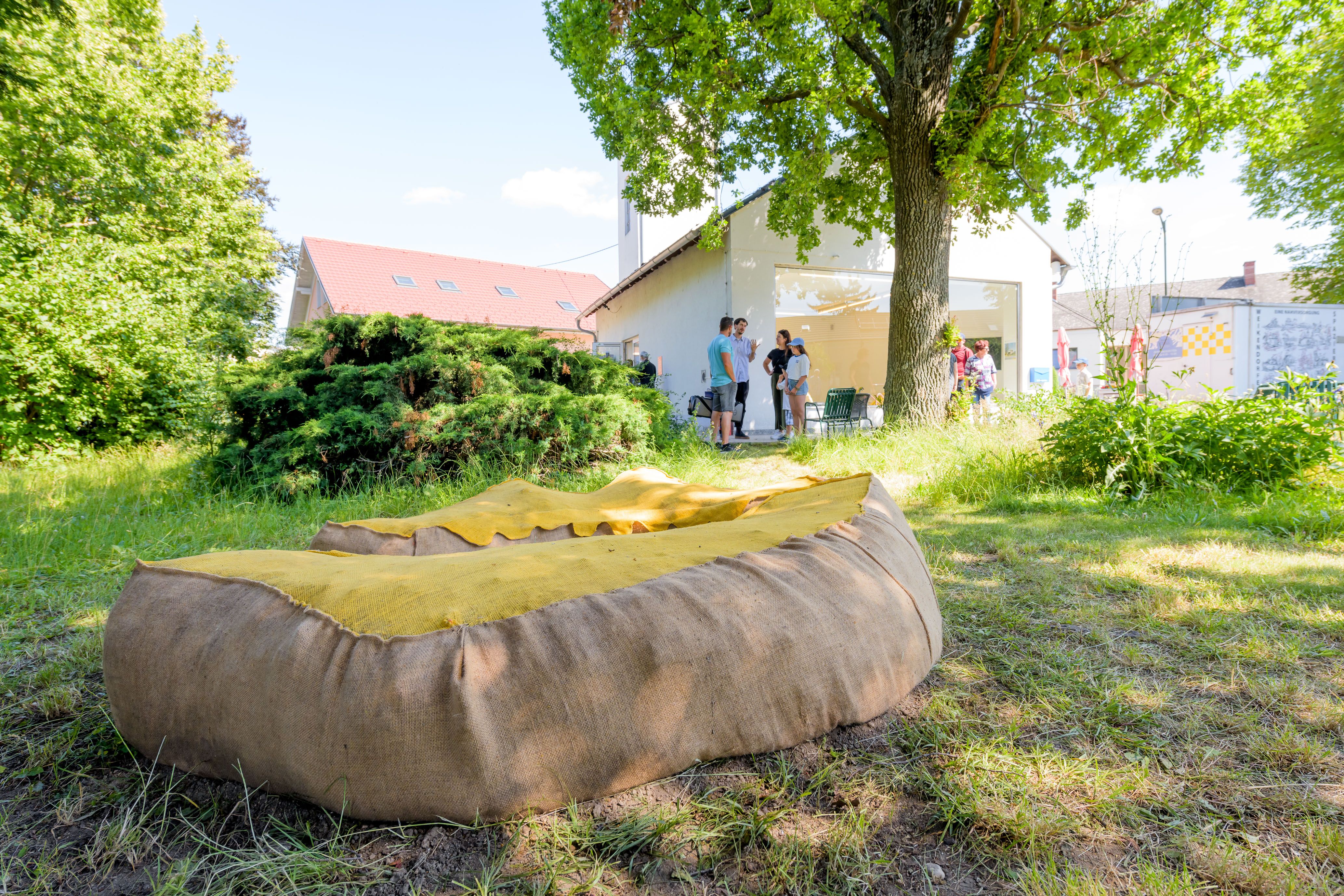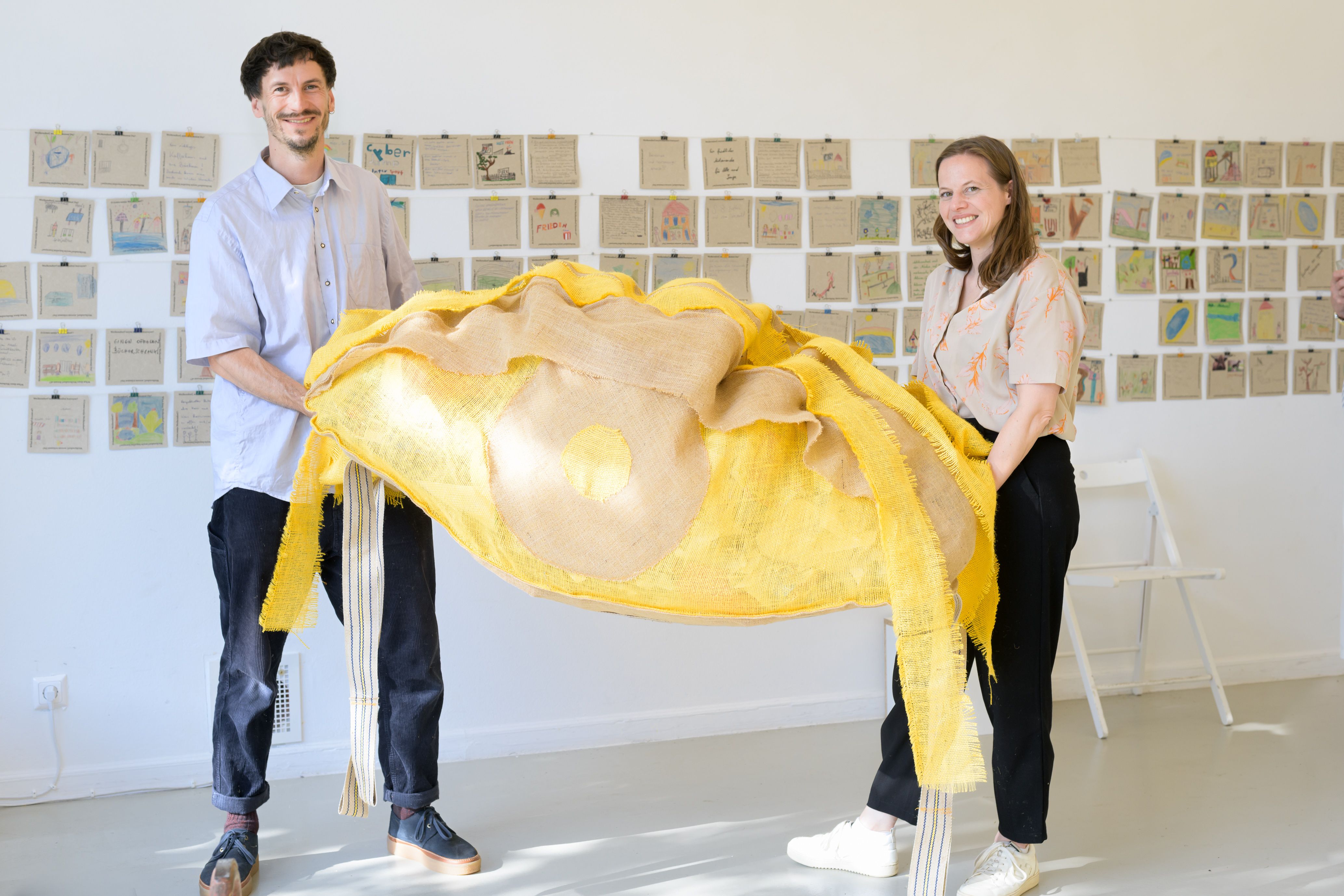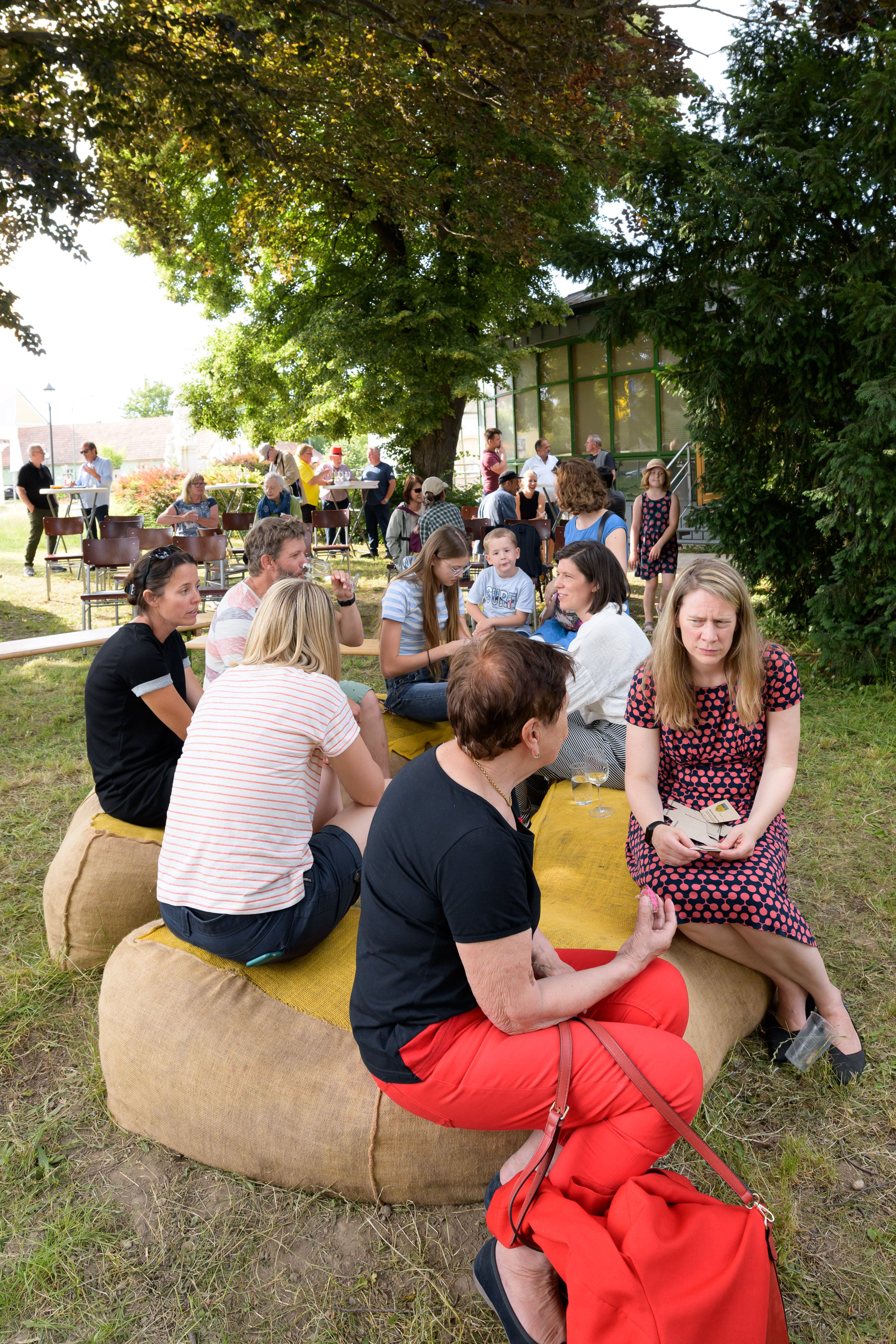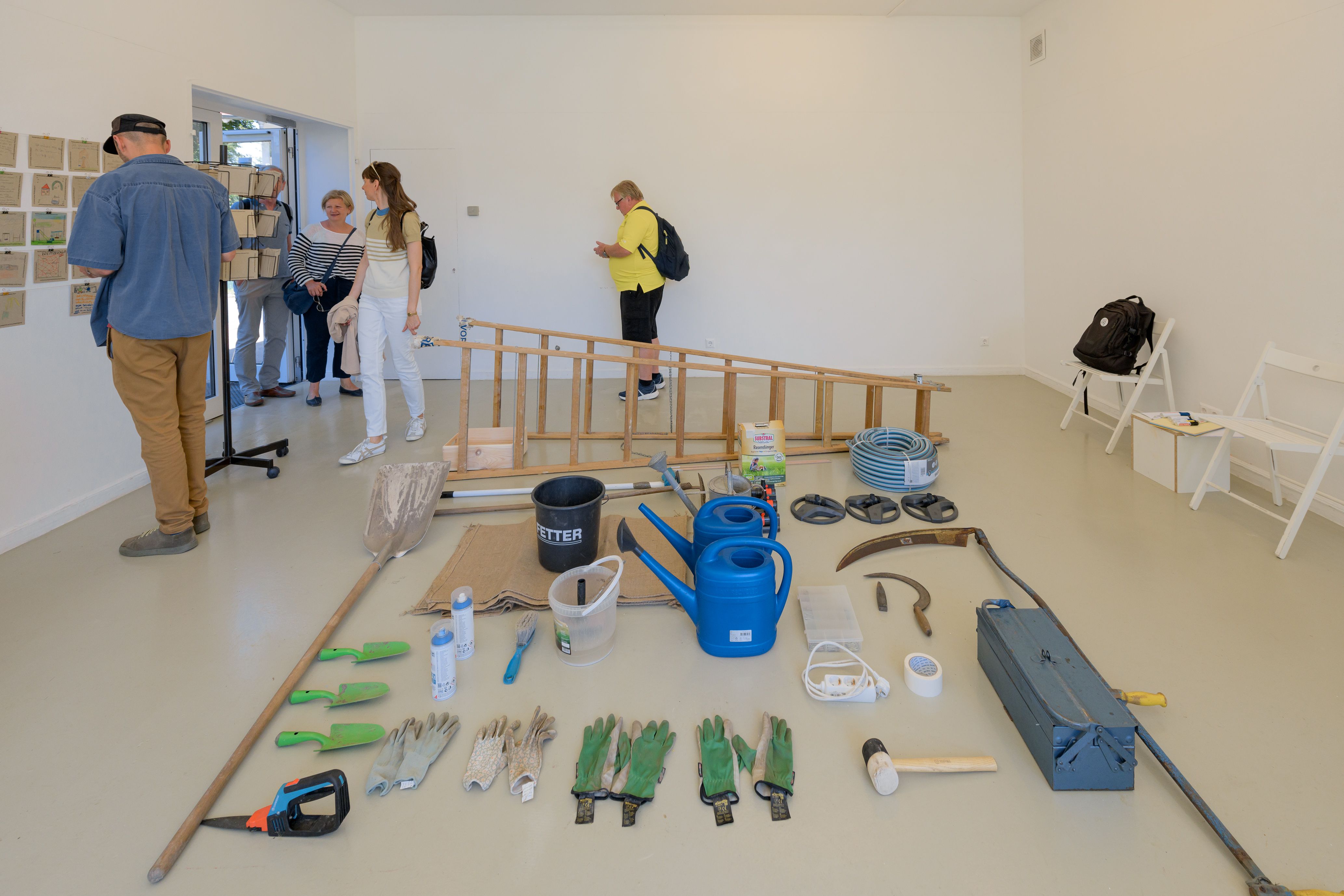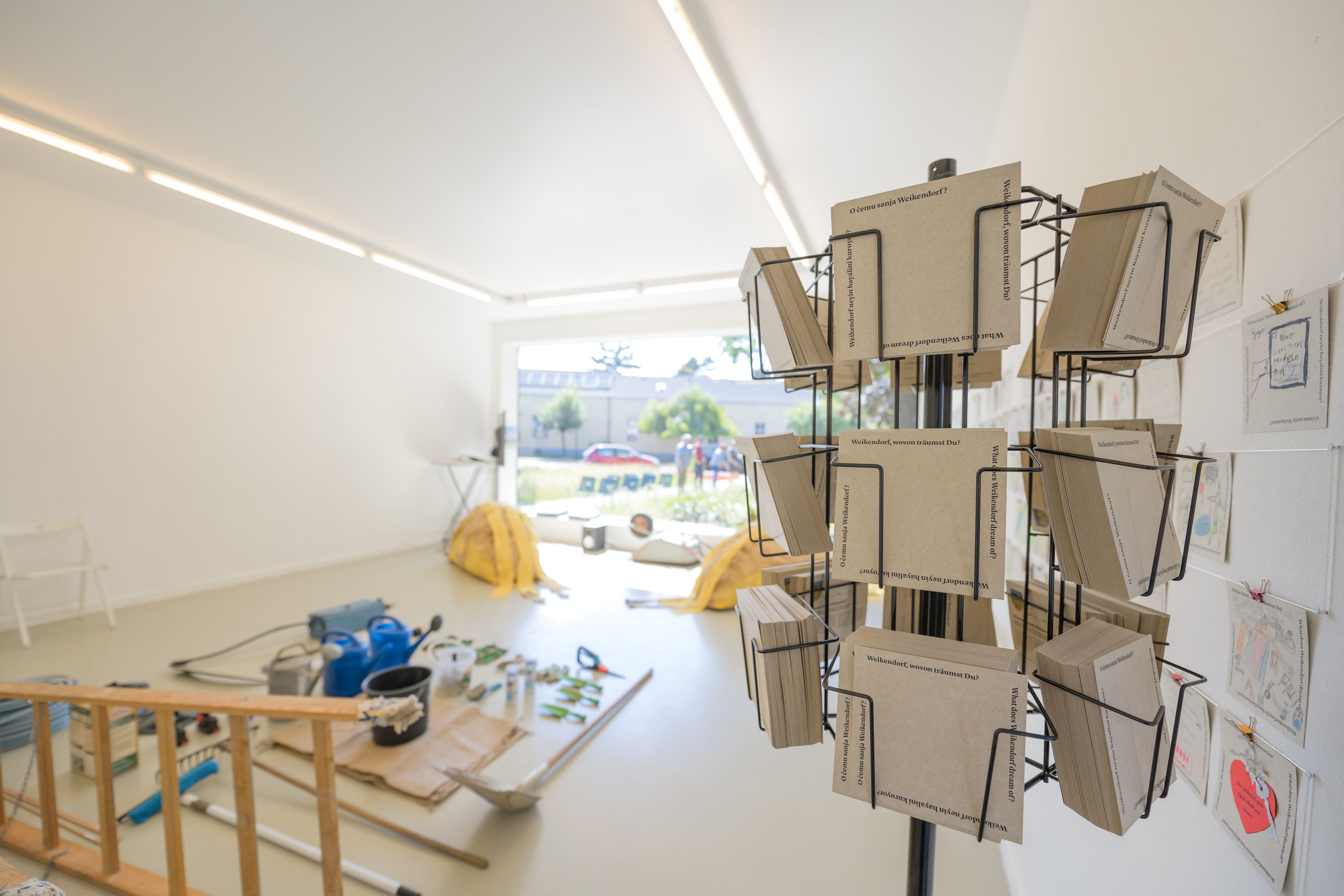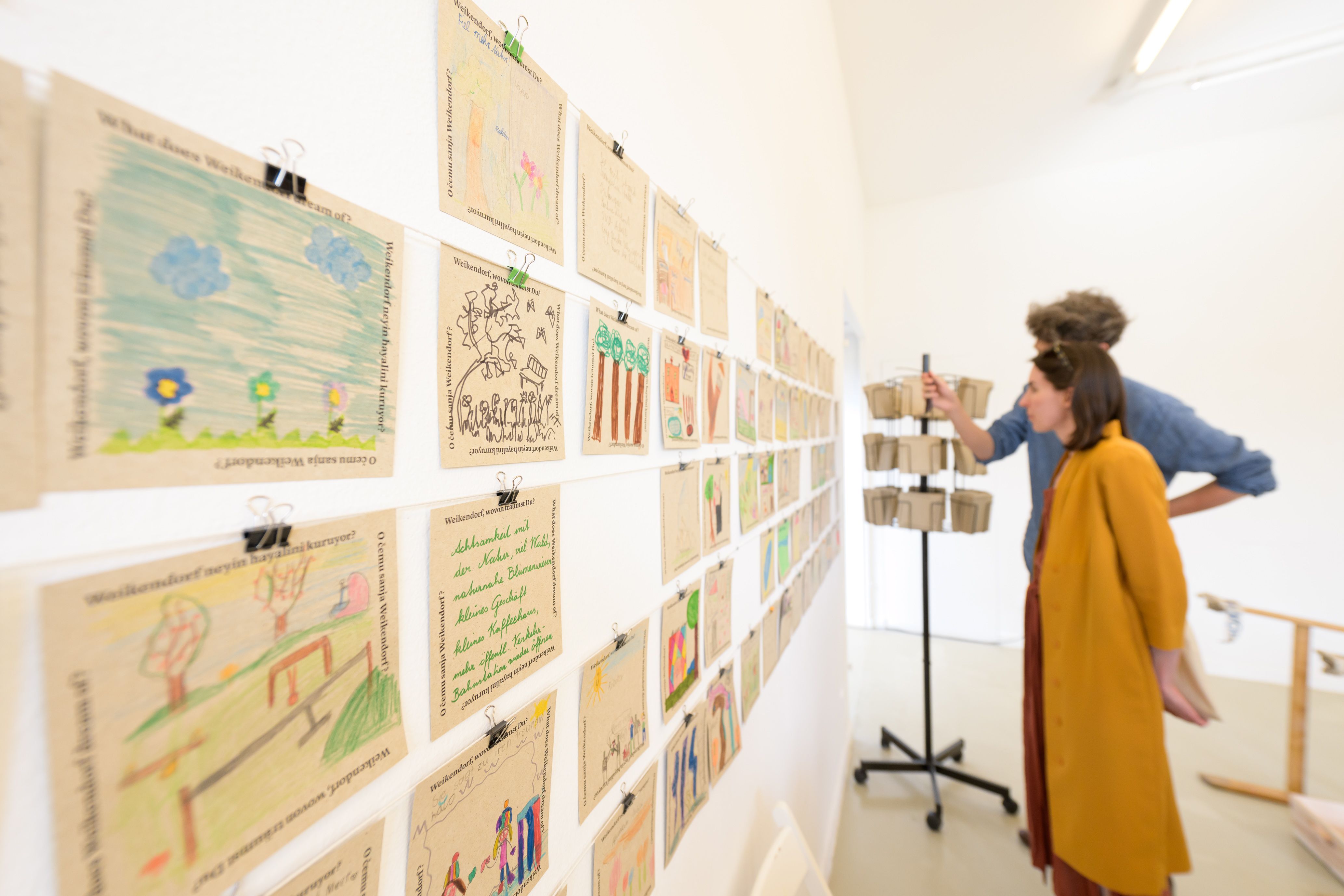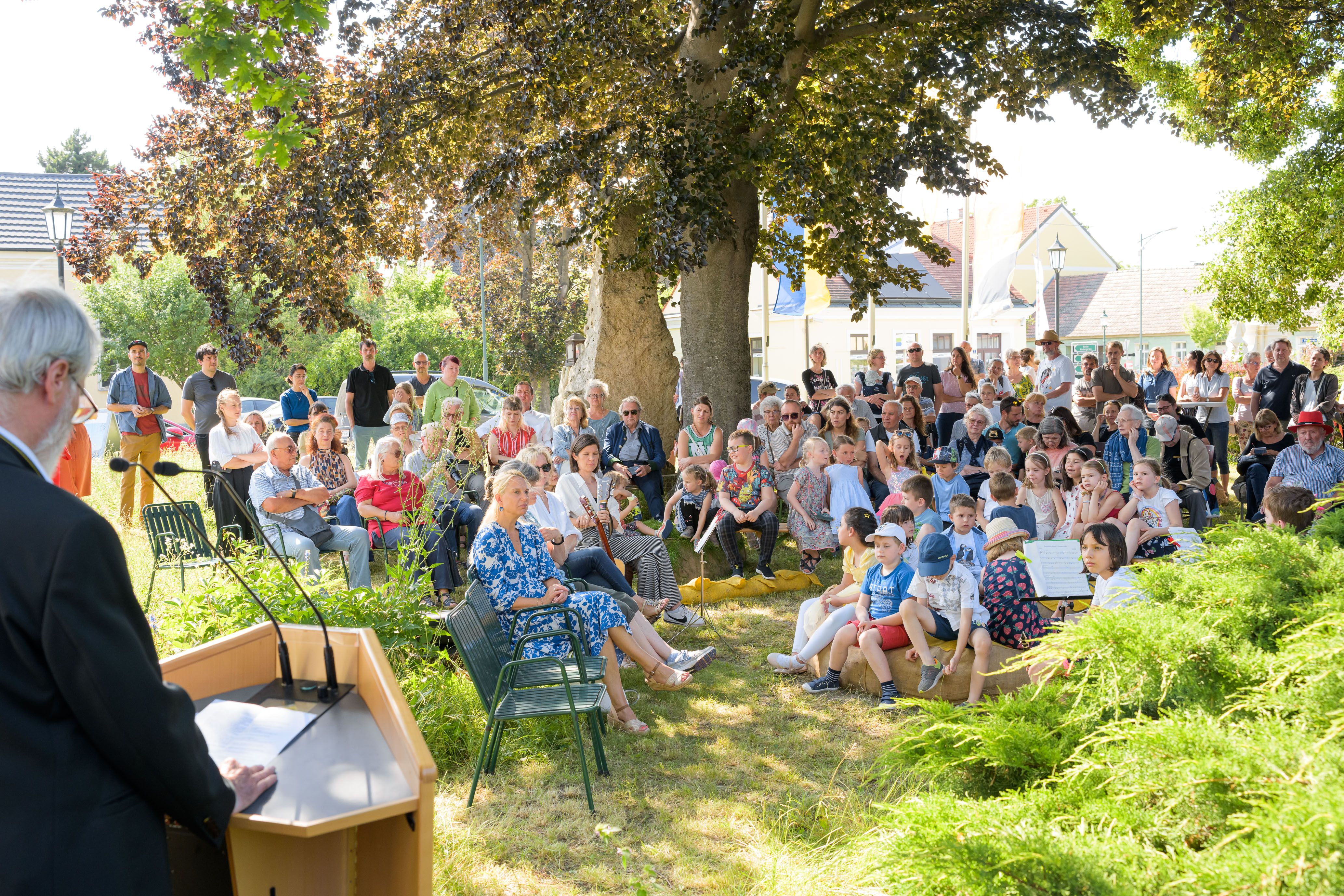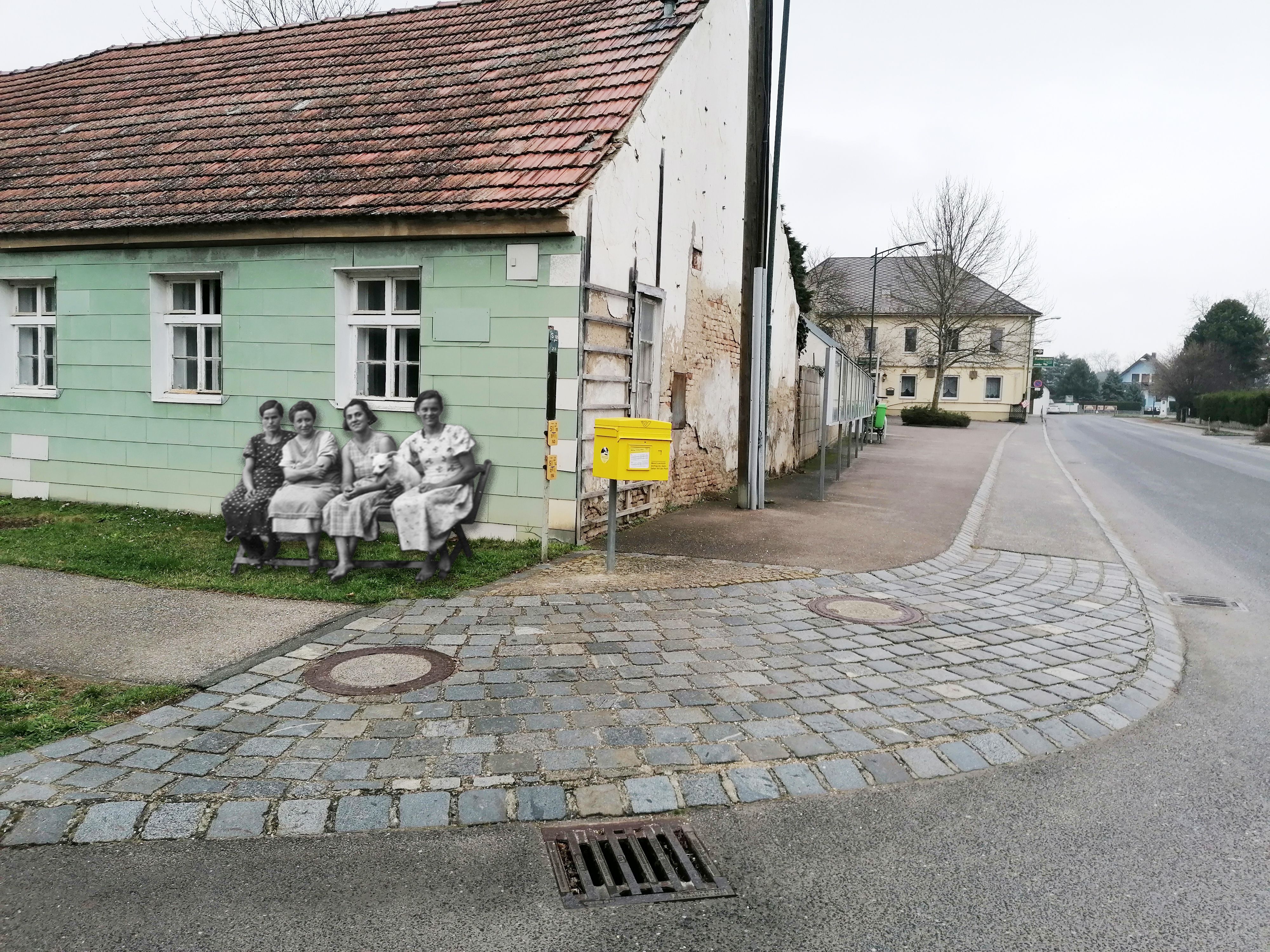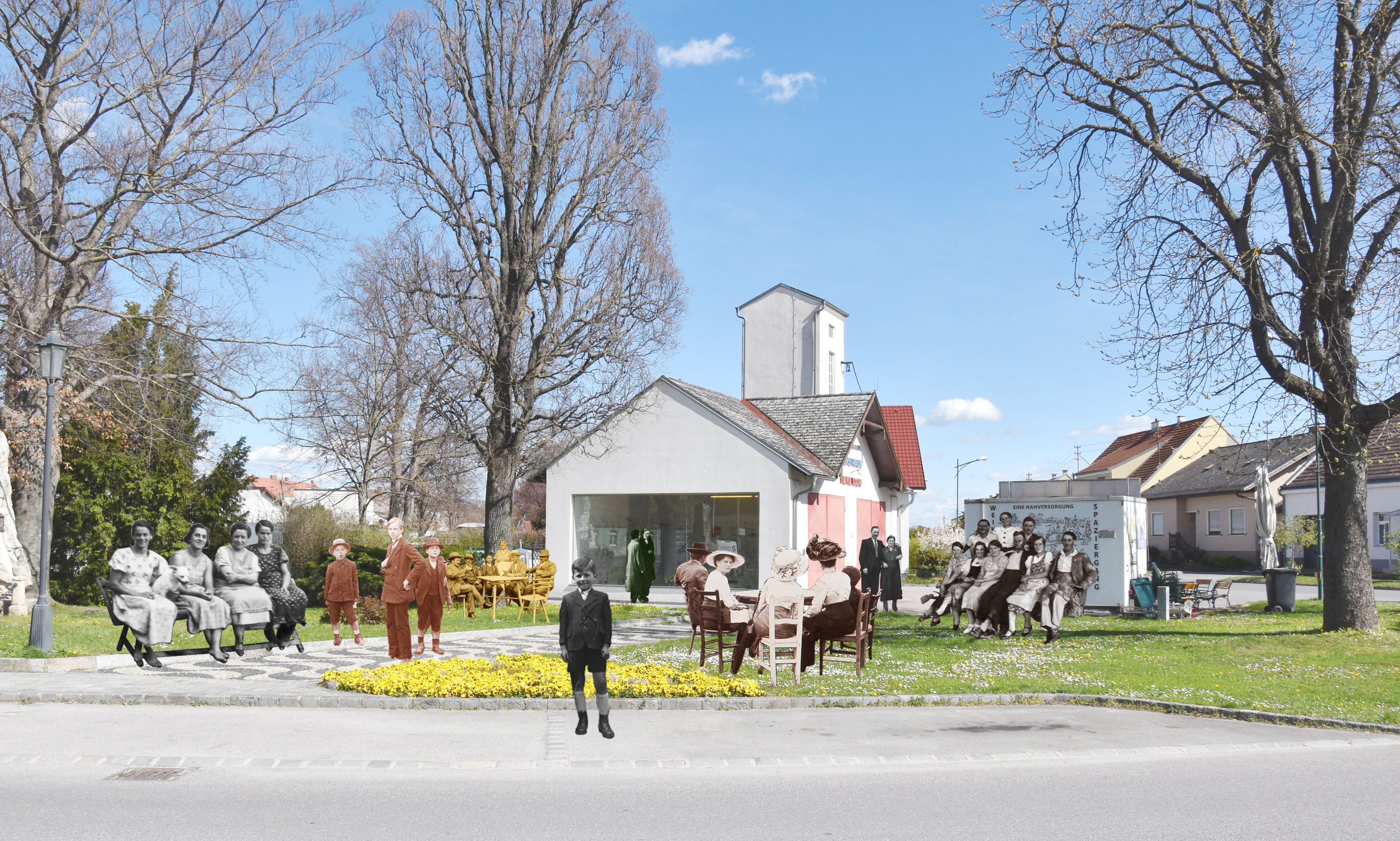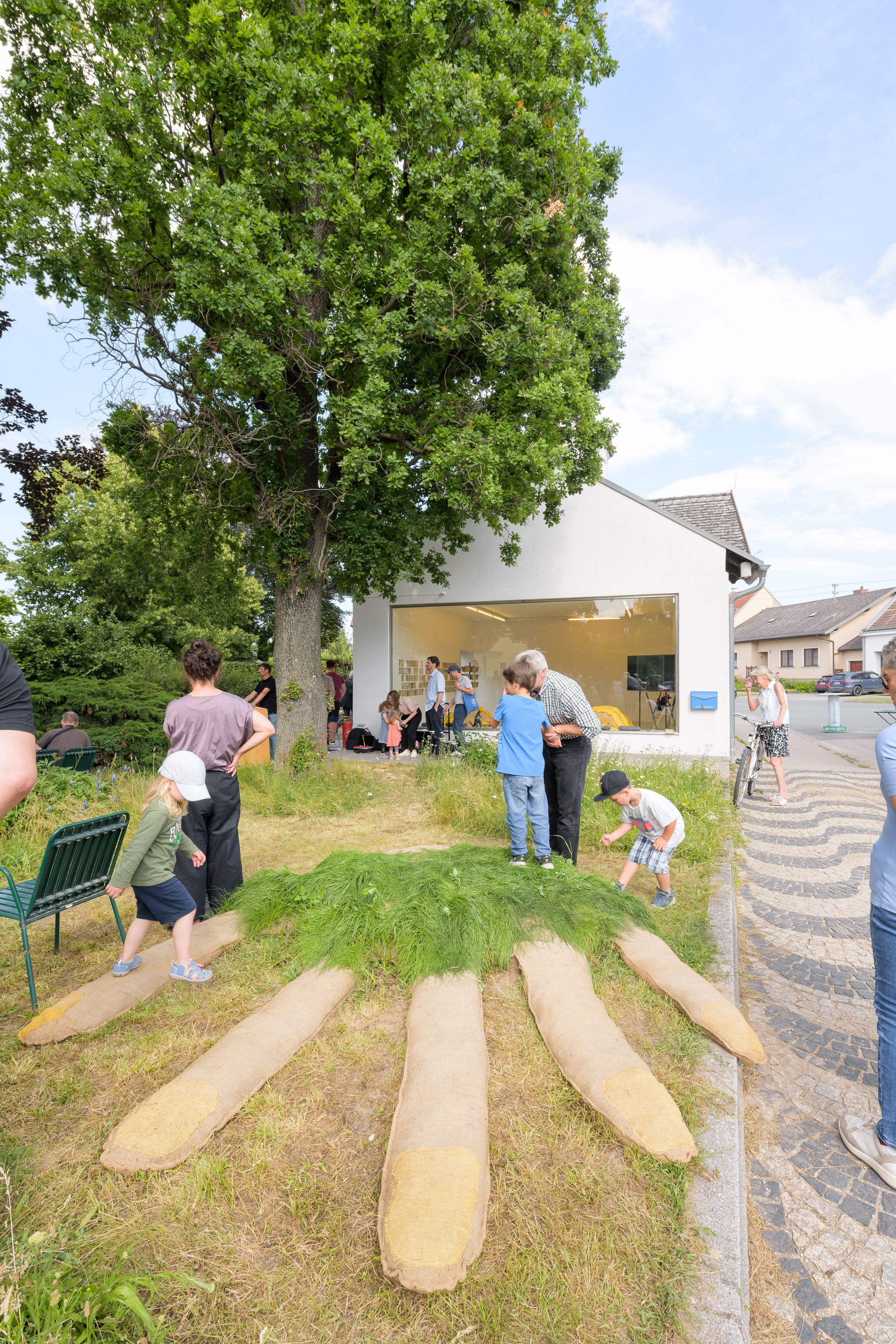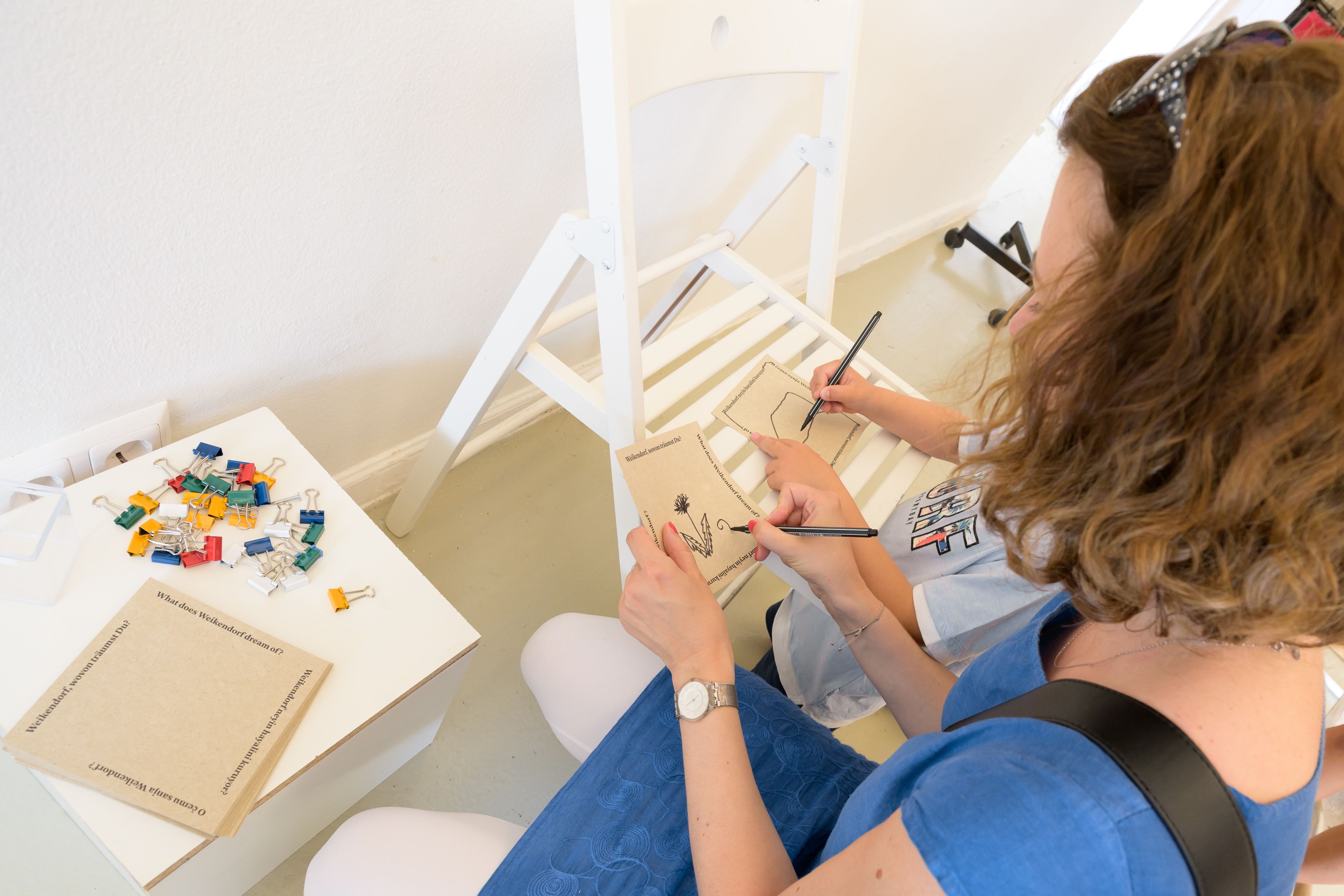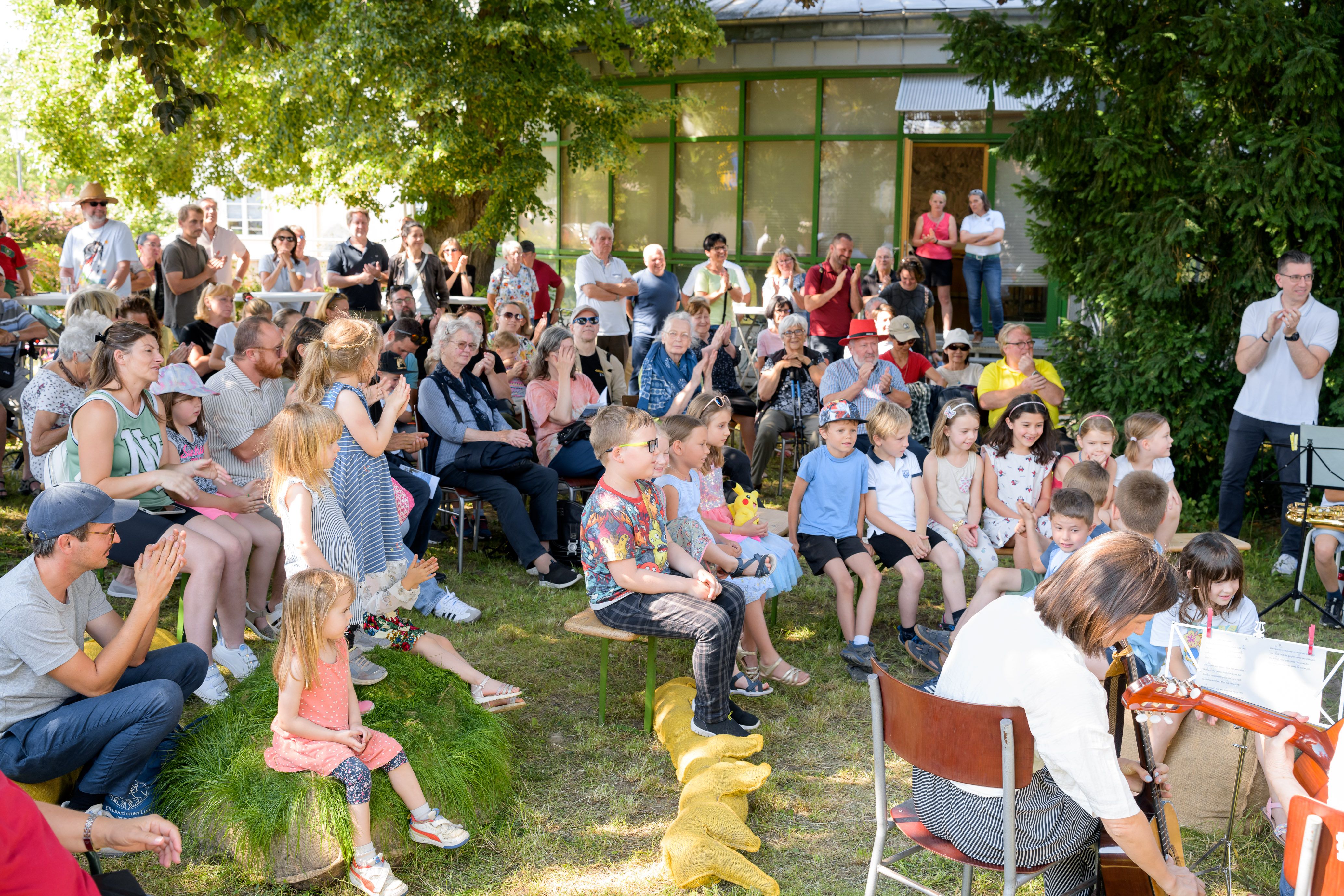Stadt aufmöbeln
:
Dorfkorrespondenz (Village Correspondence)
Back
Information
Democracy Needs Space!
On the Importance of Initiatives for Strengthening Public Spaces
Public spaces are many things. From a pragmatic point of view, they are places where people spend time, meet one another (on purpose or by coincidence), or pass through on their way to somewhere else. How these spaces are designed has a major impact on how people behave in them and categorize them. From a theoretical point of view, public spaces are the mirrors and platforms of our society and communal lives. They tell stories and talk about history, they are the foundations of our shared values and democratic participation, and they are testimonies to how we experience architectural culture. But what happens when these places become deserted and lose their role as the center of daily life? What could a counter development look like in rural communities? This was exactly the starting point for the artistic and participative intervention Dorfkorrespondenz (Village Correspondence) that took place in and around Kunstraum Weikendorf.
The public realm belongs to all of us and is therefore the opposite of the private realm. In ancient Greece, this space had a specific name: agora. The agora was where life was concentrated: It was a place for trading, exchanging, meeting, and discussing. It was where decisions were made, conflicts were resolved, and a community was formed. This public realm was the center of democratic life. The Romans also recognized the importance of the public realm and cultivated it as the Roman Forum. Administrative buildings and courts lined their public squares, which also had monuments and fountains that marked their importance. The public realm was not just a functional meeting point; it was also a place for representation and collective action.
But what are the theoretical functions of the public realm today? In his book Wofür es sich zu leben lohnt (What Is Worth Living For), the philosopher Robert Pfaller describes how social life is increasingly withdrawing to the private realm, and that public spaces are becoming deserted and losing their function. According to him, they are rarely perceived as a platform to meet, dispute, negotiate, or experience shared values anymore. Yet, it is precisely this aspect that is essential for democracy: being present and interacting with others.
Artistic interventions like Dorfkorrespondenz are essential for helping to reverse this trend because they search for ways to win back the public realm as a place full of life. The urbanist Christina Schraml and the designer Martin Färber from the Stadt aufmöbeln (Refurbish the City) initiative focused on the Rathausplatz (town hall square) of Weikendorf in the spring and summer of 2024 for their intervention, with which they not only set an example, but also triggered a valuable process.
Their intervention occurred on two levels: 1) in the form of specifically designed objects—so-called “social furniture”—in Rathausplatz in Weikendorf through which they created physical incentives to hang out and interact with others, 2) and—as a kind of meta level—by collecting the stories of village inhabitants, distributing postcards with questions, and inviting people to come to a village meeting. The collected voices and stories were finally presented in the Kunstraum, transforming it into a living archive of a shared conversation.
Another question that accompanied the project was “Where and what is the center?” This simple question has no easy answer. Urban sprawl, a shrinking population, increased mobility, and a dwindling infrastructure has reduced the importance of traditional town centers in many rural communities. How can these places become lively centers of these towns again? What unused potential is hidden in these public places and what do they need to become a public platform again?
One solution for these rural communities is public art, because it creates opportunities for discussions and get-togethers and it inspires reflection and encourages people to engage with their own environment.
Kunstraum Weikendorf offers just such a platform. Since 2007, artistic approaches have been shown here that refer to the town and its surroundings, which has been a wonderful thing. This close connection between art and the community is what makes the Kunstraum a unique model of how cultural spaces can offer opportunities to enrich rural areas.
Ultimately, it must be acknowledged that, without the people who use it, the public realm is empty, both physically and symbolically. Christina Schraml and Martin Färber’s interventions courageously and wonderfully demonstrate how such places can be filled with life again, while also making it clear how important it is to protect these public places in rural communities and cultivate them. When we actively shape and use these spaces, we not only create a place where we feel comfortable, we also shape our society.
Isabel Stumfol
Kunstraum Weikendorf
In 2007, Michael Kienzer transformed the town’s old fire station into an exhibition space for contemporary art. Since then, every year two artists have been asked to create an exhibition that is shown for several months. Kienzer selected the artists himself up until 2013, after which a jury consisting of local residents was formed as part of the Multiple Choice art outreach project spearheaded by the art educators Gabriele Stöger and Bärbl Zechner. The jury now chooses the artists from a list of nominees compiled by the Public Art Lower Austria panel of experts twice every year.
Images (10)
